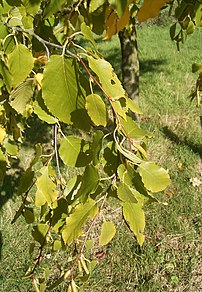[amazon_link asins=’B072N22HVX,B01BUAIG36,B00L2JKUY4′ template=’ProductCarousel’ store=’finmeacur-20′ marketplace=’US’ link_id=’9fa5e3fa-74d3-11e7-9562-572c78e859ca’]
Dandruff affects 90 per cent of the population at some time in their lives. It itches uncontrollably and produces an ungroomed appearance, with unsightly white flakes on the hair and clothing. Even newborn babies may develop a greasy, flaky scalp called “cradle capâ€. This, fortunately, disappears within a few months.
….
Poor hygiene is not to blame
.Our skin is in a continuous process of renovation. It grows outwards, then dies and is shed. Normally, this is a well-regulated orderly process which takes a little more than 20 days and goes unobserved. In people with dandruff, the process is uncoordinated. The cycle completes itself rapidly in a week or less. Thus there is excessive shedding. The dead cells then cluster together and are visible as clumps or flakes of white material.
Although dandruff is not infectious, it is associated with an organism called Malassezia (formerly called pityrosporum). This is a fat-eating, yeast-like fungus that feeds on the sebum secreted by hair follicles. It is present on the scalps of normal healthy individuals without causing problems. At certain times, overgrowth of Malassezia occurs, resulting in irritation and increased skin cell turn over. A large number of dead skin cells are then formed. As these cells fall off, the natural oil from the scalp makes them stick together. This makes the cells white and visible.
The sudden overgrowth is caused by a change in the biochemical environment of the scalp. This may be precipitated by the natural hormonal fluctuations of adolescence or aggravated in adult life by stress, illness, neurological disorders and diseases of the immune system.
It is a misconception that poor hair hygiene causes dandruff. Actually, excessive use of soaps and shampoos can damage the sensitive skin of the scalp.
Dandruff may be confused with other dermatological conditions with a similar appearance, like psoariasis or seborrhic dermatitis. The diagnosis has to be confirmed before treatment is initiated. Treatment has to be individualised. As dandruff is chronic, treatment may have to be continued lifelong.
• Mild forms can be controlled with daily cleansing using a gentle shampoo. This reduces oiliness and the build up of dead cells. Baby shampoos can be used as they are mild.
• If there has been poor response to the above, one of the various anti-dandruff shampoos sold over the counter can be tried. These contain a range of active ingredients like zinc pyrithione, coal tar, salicylic acid or selenium sulphide. Trial and error will help to determine the most suitable shampoo. Some of these might leave the scalp dry. A conditioner or a non-greasy hair oil can be massaged on the scalp after shampooing.
• After cleansing, the hair can be rinsed with a mug of water in which an aspirin tablet has been dissolved.
• Ketoconazole shampoos contain a broad-spectrum anti-fungal agent. They may work even when other shampoos have failed.
• Dandruff treatment is filled with folklore and word-of-mouth home remedies. Some natural shampoos containing henna, tulasi and neem are effective for some people. In others, if the product is contaminated there may be an allergic reaction.
Use one of these shampoos daily until the dandruff is controlled. After that, use it two or three times a week. Sometimes, alternating shampoos of two or three different groups is more effective.
The shampoo may have to be left on the scalp for a few minutes to give the active ingredients time to act before it is rinsed. The instructions on the container must be strictly followed.
It is better to consult a dermatologist if the dandruff does not improve after a month of self-care. More aggressive treatment with steroid lotions may be required.
The risk of persistent dandruff can be reduced by –
• Eating a healthy diet with adequate proteins, vitamins and minerals, particularly iron, zinc and calcium
• Reducing stress
• Adequate exercise, preferably outdoor as sunlight reduces dandruff
• Shampooing the hair regularly
• Avoiding chemicals like hair sprays, styling gels, mousses and hair waxes
Dandruff does not cause or aggravate baldness and hair loss. It is harmless and can be tackled with a little time and effort.
Source:The Telegraph (Kolkata, India)




















